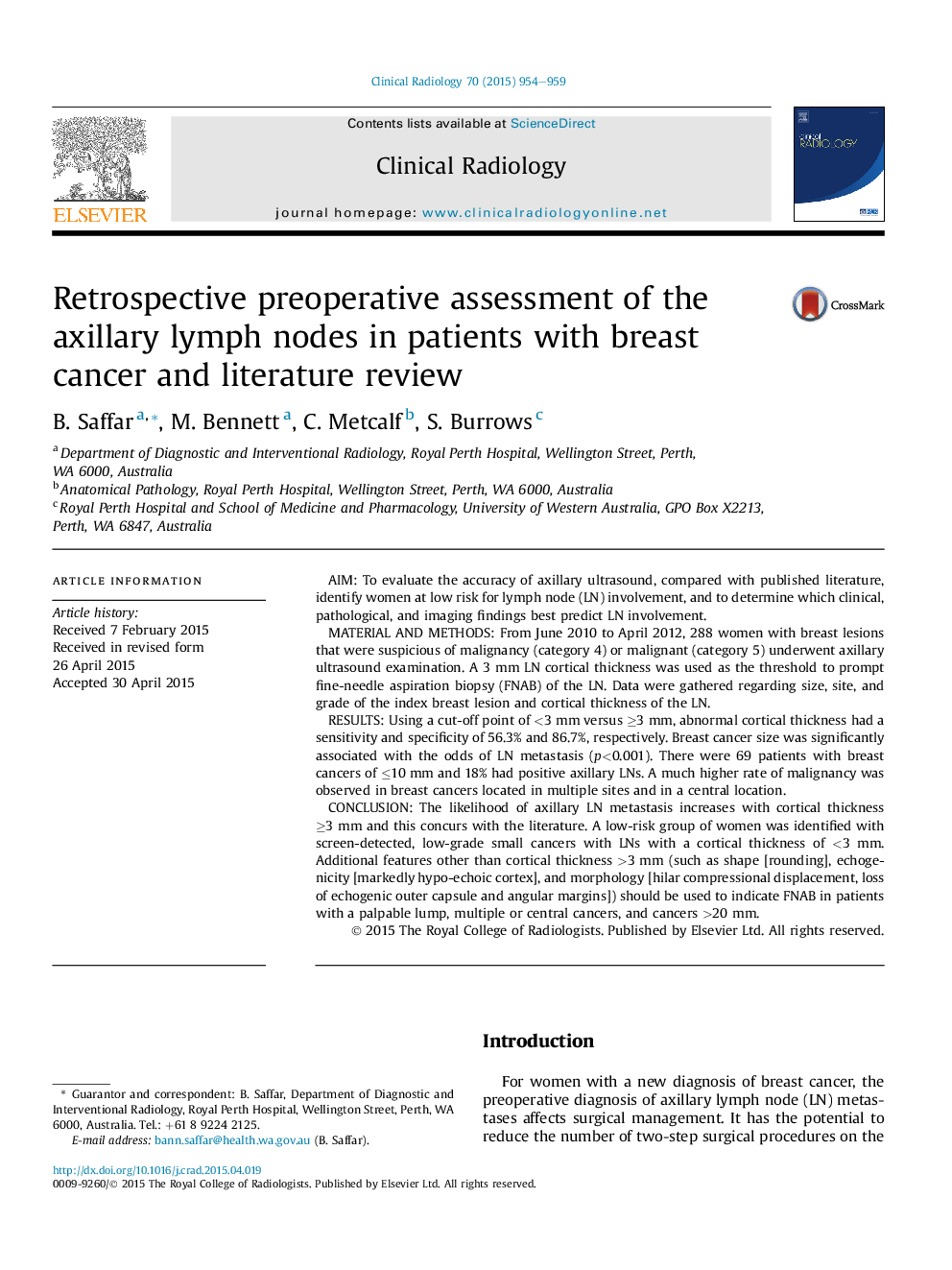| Article ID | Journal | Published Year | Pages | File Type |
|---|---|---|---|---|
| 6190788 | Clinical Radiology | 2015 | 6 Pages |
â¢Likelihood of axillary lymph node metastasis increases with increased cortical thickness.â¢Using a cortical thickness of â¥3 mm, we had a sensitivity of 56.3% and specificity of 86.7% for detecting metastases.â¢Multiple and central breast cancers have much higher rate of lymph node metastasis.
AimTo evaluate the accuracy of axillary ultrasound, compared with published literature, identify women at low risk for lymph node (LN) involvement, and to determine which clinical, pathological, and imaging findings best predict LN involvement.Material and methodsFrom June 2010 to April 2012, 288 women with breast lesions that were suspicious of malignancy (category 4) or malignant (category 5) underwent axillary ultrasound examination. A 3 mm LN cortical thickness was used as the threshold to prompt fine-needle aspiration biopsy (FNAB) of the LN. Data were gathered regarding size, site, and grade of the index breast lesion and cortical thickness of the LN.ResultsUsing a cut-off point of <3 mm versus â¥3 mm, abnormal cortical thickness had a sensitivity and specificity of 56.3% and 86.7%, respectively. Breast cancer size was significantly associated with the odds of LN metastasis (p<0.001). There were 69 patients with breast cancers of â¤10 mm and 18% had positive axillary LNs. A much higher rate of malignancy was observed in breast cancers located in multiple sites and in a central location.ConclusionThe likelihood of axillary LN metastasis increases with cortical thickness â¥3 mm and this concurs with the literature. A low-risk group of women was identified with screen-detected, low-grade small cancers with LNs with a cortical thickness of <3 mm. Additional features other than cortical thickness >3 mm (such as shape [rounding], echogenicity [markedly hypo-echoic cortex], and morphology [hilar compressional displacement, loss of echogenic outer capsule and angular margins]) should be used to indicate FNAB in patients with a palpable lump, multiple or central cancers, and cancers >20 mm.
